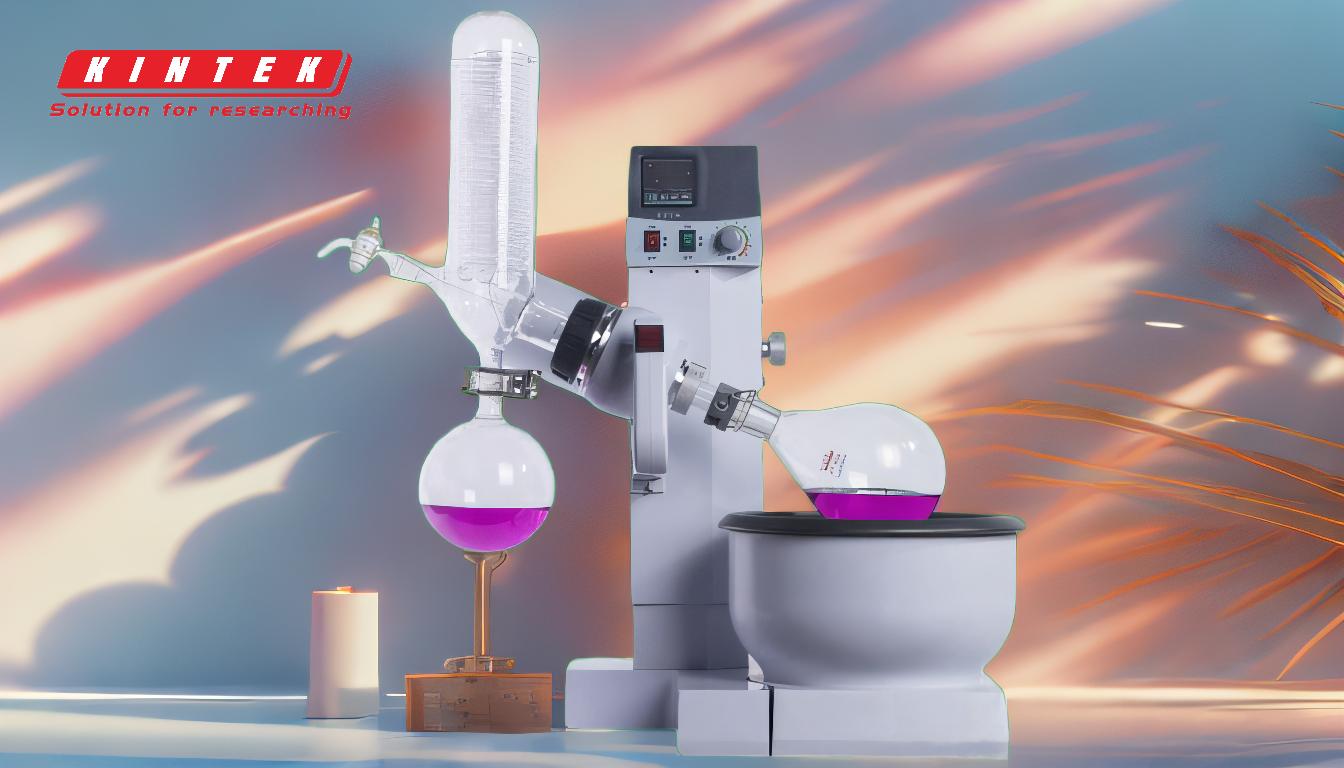Rotary evaporators are essential tools in laboratories for solvent removal and concentration of samples. The choice of flask is critical for efficient and safe operation. Flasks used with rotary evaporators typically feature a standard No. 24 interface, with common sizes being 500ml and 1000ml. The volume of the solution should not exceed 50% of the flask's capacity to prevent issues like bumping, which can lead to sample loss or contamination. Additionally, selecting a flask that accommodates approximately twice the starting volume of the sample is recommended to ensure proper evaporation and minimize the risk of overflow. Using a bump trap is also advised to safeguard against sample loss in case of bumping.
Key Points Explained:

-
Standard Interface No. 24:
- Flasks designed for rotary evaporators typically use a standard No. 24 interface. This standardization ensures compatibility between the flask and the rotary evaporator, allowing for secure attachment and efficient operation.
- The No. 24 interface is a common specification in laboratory glassware, ensuring that flasks from different manufacturers can be used interchangeably with rotary evaporators.
-
Common Flask Sizes:
- The most commonly used flask sizes for rotary evaporators are 500ml and 1000ml. These sizes are suitable for a wide range of laboratory applications, from small-scale research to larger sample processing.
- The choice of flask size should be based on the volume of the sample being processed. It is generally recommended to use a flask that can hold about twice the starting volume of the sample to ensure efficient evaporation and prevent overflow.
-
Solution Volume Limitations:
- The amount of solution in the flask should not exceed 50% of the flask's capacity. This guideline helps prevent bumping, a phenomenon where the solution violently boils and splashes into the condenser, potentially leading to sample loss or contamination.
- By limiting the solution volume to half the flask's capacity, you create sufficient headspace for the vapor to condense and for the solution to expand during heating, reducing the risk of bumping.
-
Preventing Bumping:
- Bumping can be minimized by selecting a flask that accommodates approximately twice the starting volume of the sample. This provides enough space for the solution to expand and for vapor to form without causing violent boiling.
- Using a bump trap is also recommended. A bump trap is a secondary container that catches any sample that may splash out of the flask during bumping, preventing it from entering the condenser and solvent trap. This reduces the need to recover the sample from these components, saving time and effort.
-
Importance of Proper Flask Selection:
- Proper flask selection is crucial for the efficient and safe operation of a rotary evaporator. Choosing a flask that is too small can lead to overflow and bumping, while a flask that is too large may result in inefficient evaporation.
- The goal is to balance the flask size with the sample volume to ensure optimal evaporation rates and to minimize the risk of sample loss or contamination.
-
Practical Considerations:
- When selecting a flask, consider the nature of the sample and the solvents being used. Some solvents may have higher boiling points or may be more prone to bumping, requiring additional precautions.
- Always inspect the flask for any cracks or defects before use, as damaged glassware can compromise the safety and efficiency of the rotary evaporation process.
In summary, when using a rotary evaporator, it is essential to select a flask with a standard No. 24 interface, typically available in 500ml and 1000ml sizes. The solution volume should not exceed 50% of the flask's capacity to prevent bumping, and choosing a flask that can hold about twice the starting volume of the sample is recommended. Using a bump trap further safeguards against sample loss. Proper flask selection and adherence to these guidelines ensure efficient and safe operation of the rotary evaporator.
Summary Table:
| Key Considerations | Details |
|---|---|
| Standard Interface | No. 24 interface ensures compatibility with rotary evaporators. |
| Common Flask Sizes | 500ml and 1000ml are widely used for various lab applications. |
| Solution Volume Limit | Do not exceed 50% of the flask's capacity to prevent bumping. |
| Flask Size Recommendation | Choose a flask that holds twice the starting sample volume for efficiency. |
| Bump Trap Usage | Use a bump trap to safeguard against sample loss during evaporation. |
Need help selecting the right flask for your rotary evaporator? Contact our experts today for personalized advice!










